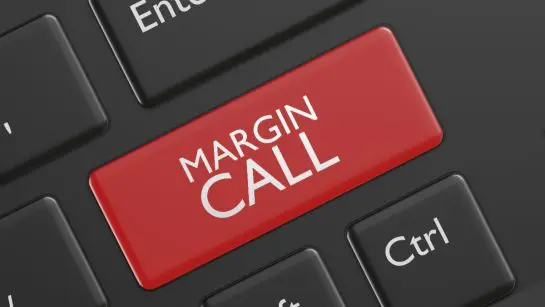Cryptocurrency loans are an increasingly popular way to borrow cash for plenty of reasons. You don’t need to undergo credit checks, nothing goes down on your credit history, and there’s no need to sell your crypto.
Collateralizing a loan with crypto is simple to do and a great way to secure a cash loan or even a line of credit without going the traditional banking route.
However, cryptocurrencies are still a developing asset class faced with plenty of intraday volatility. Bitcoin has been known to rush both up and down at incredible speeds, sometimes making $1,000+ moves on the same day. In practice, such moves may be the difference between your loan standing above water and being margin called.
Let’s look at what it means to be margin called, and how to prevent it from happening.
A Margin Call is the Liquidation of Your Digital Assets
When you take out a crypto loan, you’ll need to collateralize it with digital assets under your ownership. Crypto loan platforms protect you (and themselves) by asking you to deposit, on average, double the amount in crypto that you want to borrow in cash.
For example, say you want to borrow $10,000. To do so, you’ll need to deposit $20,000 worth of cryptocurrency to the platform’s wallet. Officially, the ratio which determines the risk of a loan is called a loan-to-value (LTV) ratio.
Most cryptocurrency lenders won’t loan above a 50% LTV to protect your collateral from being margin called. Let’s walk through an example so you can easily understand the idea.
You’ve borrowed $100,000 with your Bitcoin collateral worth $200,000. At the time of your deposit, BTC was worth $4,000. However, one month later, BTC is trending toward the $2,500 mark. Your lender will probably start issuing warnings to your phone and email about the potential for a margin call (also known as being liquidated).
Being margin called (or liquidated) means the lender will sell your collateralized assets to cover the value of the loan once your LTV reaches a liquidation threshold. Lending platforms tend to have different liquidation thresholds, but they’re all generally in the 90% LTV range.
So, in the above example, a 90% LTV liquidation threshold equates to your portfolio being margin called if BTC hits $2,222.
Cryptocurrency’s volatility can also be a good thing for your LTV by taking you in the opposite direction of a margin call. If Bitcoin’s value rises, the value of your collateral rises, which drops your LTV in turn.
Being Margin Called Hurts, But You Have Options
Nobody wants to be margin called, but it happens sometimes. When you sign up with a crypto lender, the first (and most important) thing you should do is setup margin call notifications.
Send alerts to your phone and email to give yourself enough time to respond in the event you receive a margin call notification. When you receive an alert or notice your LTV rising when crypto prices shift, you have several options at your disposal.
-
- Add more collateral to bring your LTV lower. This option is known as meeting the margin call and is an effective means of saving your crypto collateral.
- Pay some of your loan off with cash. Again, this option will lower your LTV back to safe levels.
- If you are unable to add more collateral or pay off part of the loan, your last option is to let the market play out. Your loan may survive—but it’ll be a roll of the dice.
Make sure your contact info is always up to date with the lender so as not to miss an important notice about your LTV.
The Importance of Maintaining a Low LTV Ratio
If you’re taking out a crypto loan, it’s probably because you don’t want to sell your crypto. Losing it to a margin call certainly defeats the purpose, wouldn’t you say?
Your best bet is to proactively manage your LTV ratio by keeping it as low as possible. A 50% LTV ratio is a good starting point, but going lower toward the 30% mark is even better.
Additionally, it’s essential to stay on top of your loan by checking on it regularly. By employing a few simple risk management techniques, you can keep your crypto and enjoy a stress-free loan.









